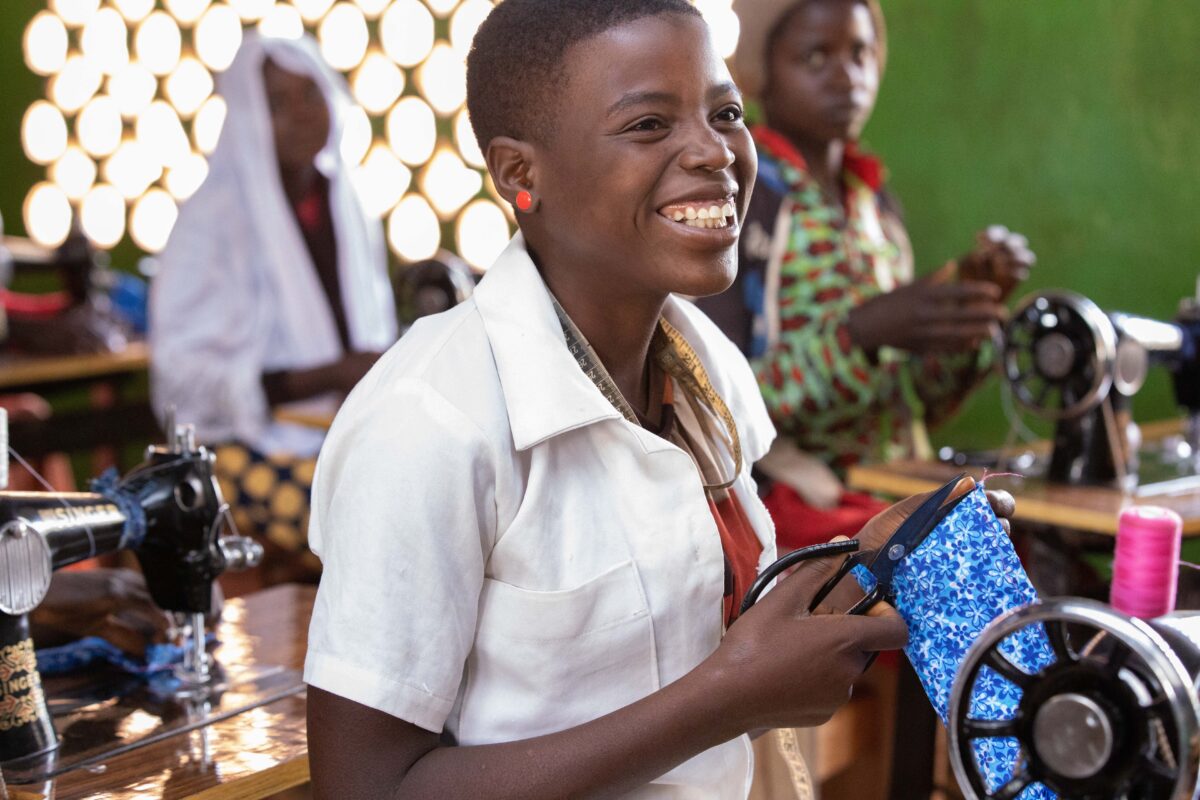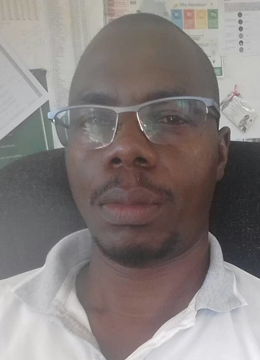07 February 2024 by Clement Mwazambumba, with introduction by Dr Samantha Ross
Link Education’s TEAM Girl Malawi[1] UKAid-funded project[2] has drawn to a very successful close. 77% of the highly marginalised participants can now read, write and understand and use maths; 74% have stronger sexual reproductive health and life skills; over 1,000 returned to primary school, 1,115 graduated from vocational training in tailoring or hairdressing, and 1,902 gained entrepreneurship skills. 13% of the girls had some kind of disability. These girls, who were being left behind, had never been to school or if they had, had not gained foundational skills, were finally able to thrive – 88% of the girls ‘agreed a lot’ that participation in TEAM had helped their future.
TEAM has demonstrated an efficient and effective inclusive model that can deliver quality education in a non-formal setting to the most marginalised youth, including those with disabilities, supporting the Government of Malawi’s commitment to provide 12 years of education and to reach the most vulnerable. Globally, TEAM delivers several of the World Bank’s ‘Great Buys’ and ‘Promising Buys’ as listed by the Global Education Evidence Advisory Panel framework.

We have been able to identify six drivers that led to TEAM’s success and suggest that these should be embedded in all holistic programming.
- Partnerships: work alongside other national education programmes, district education and welfare officers, primary schools, disability organisations, community groups, village leaders and local businesses to holistically support learners. For example, community members conducted home follow-ups on absenteeism and mapped solutions; disability organisations and government departments conducted assessments and developed support networks.
- Community-driven: build on community knowledge, resources and vision. Communities identified and managed learning centres and ensured spaces were safe, appropriate and accessible; utilising community resources kept costs low; child-care provided by mother groups enabled young mothers or carers to attend; and community messaging promoted value of education and child protection.
- Safety and protection: develop comprehensive community-led safeguarding systems that involve girls, boys, parents, husbands, facilitators, schools, village leaders and district teams to ensure learners feel safe and supported.
- Adaptive and flexible: create an enabling, inclusive environment so all participants succeed. For example differentiated learning plans; facilitator guides that focused on inclusion and relevance; class times negotiated around learners’ other responsibilities; and crucially an environment that continuously listens, reflects and responds whilst using data to drive evidence-based adaptations.
- Build agency: listen to participants and recognise their own visions and abilities whilst nurturing self-esteem, decision-making and foundational skills to they can choose their own next steps.
- Value for money: keep costs low and promote sustainability by working within existing systems and structures at government, civil society, and community level; establish innovative linkages for more efficient delivery such as child protection.
You can see a short video summarising the project here.
You can read the TEAM Girl Malawi Final Reflections Summary Report here written by the Girls’ Education Challenge find manager.
Read on to hear more from Clement Mwazambumba, a TEAM District Manager from 2018 to 2023 – the lifetime of the project.
TEAM Girl Malawi supported over 5,000 10 to 19-year-old, highly marginalised and out-of-school girls with diverse needs such as pregnant girls, breastfeeding girls and girls in early marriage. The project worked across one urban and two rural districts in Malawi (Lilongwe urban, Dedza and Mchinji). In these regions, there was an above average rate of girls’ dropout, grade repetition, orphans and child-headed households.

My role involved coordinating with staff from partner organisations and external stakeholders such as the government and other CSOs.
From the outset, our objectives were to support girls to get reading, writing and numeracy skills. For many of us who were working in education, this was not new. However, inclusive education – making sure we were also supporting girls with disabilities and other challenges – was new. Our early screening process helped us to understand the barriers these girls faced. We talked to the girls and their parents as part of the process. As a result, our understanding of how best we could help the girls, along with our objectives, became a lot clearer. It also encouraged us to engage experts with experience of working in inclusive education and child protection.
One of the first challenges we faced was explaining our scope to the communities – what we were trying to achieve, and what we could and could not do. We needed to engage parents and get them ‘on board’ but explain that we would not be tackling everything at the family and community level. There is a lot of hunger and poverty, and sometimes families need their children to work. It is difficult for them to prioritise education. So, we kept talking and talking to families and began to gain some consensus.
Indeed, the engagement of many parents was extremely heartening. There was great cooperation and enthusiasm from many of the parents whose children had not had an opportunity to go to school – particularly those with disabilities. Some parents even joined lessons to see for themselves what was happening – and during COVID-19 closures a number of parents contacted us looking for information on how their children could continue to be educated.
The parental enthusiasm was a great boost for us and when these children went through the programme, when they improved – even in their ability to socialise with peers and staff – it was very exciting for parents, but it was also an enriching experience for us.
In terms of other achievements, I think we were successful in getting girls through the educational content, particularly with the impact of COVID-19. We started with seven subjects but had to rationalise these so that we could get through as much as possible. I believe the learners received the best education and learning environment possible.
One thing that could be enhanced in future programmes is the training of facilitators. Many of them did not have the same skills as teachers, particularly in teaching diverse classes with children with different needs. This improved with each cohort but more online training or refresher courses could be included with more time and resources.
I believe that we have started a good dialogue about the educational needs of marginalised girls at many levels – within communities and with government structures in the three regions. We have also brought inclusivity to the fore.
On a personal note, this has been the most enriching experience. I had a background in education and working with schools, but this has gone beyond education. I have experience and depth in other areas, such as safeguarding and inclusion, that I will be able to put to good use in the future.
[1] This is a link to a summary of the endline findings.
[2] The project was funded by FCDO’s Leave No Girl behind portfolio, part of the Girls’ Education Challenge
Written by Clement Mwazambumba, with introduction by Samantha Ross


